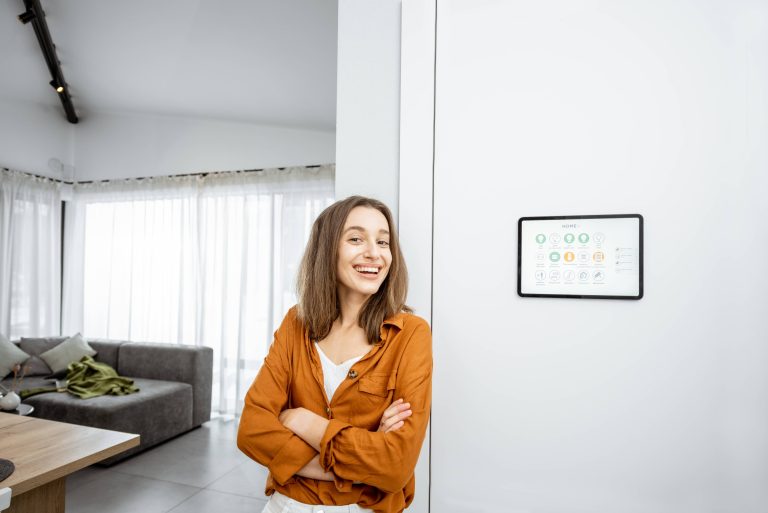
In recent years, the concept of a smart home has evolved from a futuristic dream into a tangible reality. As technology continues to advance at a rapid pace, the design and functionality of smart homes are also undergoing significant transformations. Homeowners are increasingly seeking innovative solutions that enhance convenience, security, and energy efficiency. In this blog post, we will explore some of the emerging trends in smart home design that are shaping the way we live.
1. Integration of Artificial Intelligence
Artificial Intelligence (AI) is at the forefront of smart home design. AI-powered devices and systems are becoming more sophisticated, allowing homeowners to enjoy a seamless and intuitive experience. Voice-activated assistants like Amazon Alexa, Google Assistant, and Apple Siri are now commonplace, enabling users to control various aspects of their homes with simple voice commands. These AI systems are continuously learning and adapting to user preferences, making them more efficient and personalized over time.
Moreover, AI is being integrated into home security systems, providing advanced features such as facial recognition, anomaly detection, and predictive analytics. These capabilities enhance the security of smart homes by identifying potential threats and alerting homeowners in real-time.
2. Energy Efficiency and Sustainability
As environmental concerns continue to grow, energy efficiency and sustainability have become key considerations in smart home design. Homeowners are increasingly adopting smart thermostats, energy-efficient lighting, and solar panels to reduce their carbon footprint and lower energy bills. Smart thermostats, for instance, can learn a household’s schedule and adjust the temperature accordingly, optimizing energy usage.
Additionally, smart home systems are now capable of monitoring energy consumption in real-time, providing homeowners with insights into their energy usage patterns. This data empowers users to make informed decisions about their energy consumption and identify areas where they can improve efficiency.
3. Enhanced Connectivity and Interoperability
The Internet of Things (IoT) is the backbone of smart home technology, enabling devices to communicate and work together seamlessly. As the number of connected devices in homes continues to grow, enhanced connectivity and interoperability have become crucial. Homeowners are looking for systems that can integrate various devices from different manufacturers without compatibility issues.
To address this demand, industry leaders are working on developing universal standards and protocols that facilitate seamless communication between devices. The introduction of Matter, a new connectivity standard backed by major tech companies, aims to simplify the integration of smart home devices and ensure they work harmoniously together.
4. Health and Wellness Features
The COVID-19 pandemic has heightened awareness of health and wellness, leading to an increased focus on incorporating these features into smart home design. Homeowners are now seeking solutions that promote a healthy living environment. Smart air purifiers, for example, can monitor air quality and automatically adjust settings to maintain optimal conditions.
Furthermore, smart lighting systems are being designed to mimic natural light patterns, promoting better sleep and overall well-being. These systems can adjust the color temperature and intensity of light throughout the day, aligning with the body’s natural circadian rhythm.
5. Personalized and Adaptive Spaces
Smart home design is moving towards creating personalized and adaptive spaces that cater to individual preferences and lifestyles. With the help of AI and machine learning, smart homes can now learn and adapt to the habits and routines of their occupants. This personalization extends to various aspects of the home, including lighting, temperature, and entertainment systems.
For instance, smart lighting systems can automatically adjust based on the time of day, activity, or mood, creating a customized ambiance for each room. Similarly, smart entertainment systems can recommend content based on viewing history and preferences, providing a tailored experience for each family member.
6. Security and Privacy Enhancements
As smart homes become more connected, concerns about security and privacy have also increased. Homeowners are seeking solutions that protect their data and ensure the security of their smart devices. Manufacturers are responding by implementing robust security measures, such as end-to-end encryption and multi-factor authentication, to safeguard user information.
Additionally, there is a growing emphasis on user control over data. Smart home systems are being designed to provide users with greater transparency and control over their data, allowing them to manage permissions and access settings easily.
Conclusion
The landscape of smart home design is constantly evolving, driven by technological advancements and changing consumer preferences. As we look to the future, it is clear that smart homes will continue to become more intelligent, efficient, and personalized. By embracing these emerging trends, homeowners can create living spaces that not only enhance convenience and comfort but also promote sustainability and well-being. Whether it’s through AI integration, energy efficiency, or enhanced connectivity, the possibilities for smart home design are endless, promising a future where our homes are more in tune with our needs and the environment.













